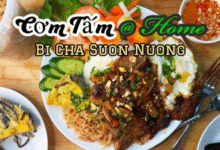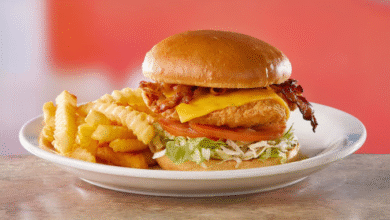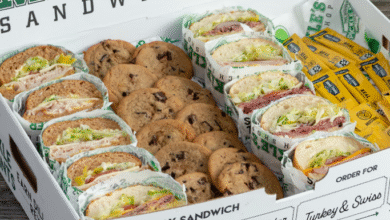Bappam: A Soft and Spongy South Indian Dish You Will Love

Bappam is a tasty and soft food that comes from South India. Many people enjoy eating bappam for breakfast or dinner because it is light and yummy. This dish looks like a pancake, but it is round with soft, fluffy middle and crispy edges. People love to eat it with curry, coconut milk, or even just sugar. Bappam is also known for being made from rice and coconut, which makes it a healthy choice for many. It is very easy to digest, and children, adults, and even older people can enjoy it without any problem. In many South Indian homes, bappam is cooked fresh in the morning. It smells great and brings everyone to the table. If you have never tried bappam before, you are really missing out on a simple and tasty dish that is also good for your health.
In Kerala, bappam is not just food, it is part of the culture. Families gather around and enjoy bappam together during special mornings and holidays. What makes bappam so special is how it is made with care and love. First, rice is soaked and ground, then mixed with coconut and fermented overnight. The next morning, the batter is poured into a special round pan to cook slowly. The center becomes soft and fluffy, while the sides get thin and crispy. Some people even add a little sugar or coconut milk to make it sweeter. Bappam is also known by other names like appam or palappam, but each version has its own little twist. No matter what you call it, one thing is sure—bappam is a dish full of taste, history, and warmth that brings people together around the table.
How to Make Bappam at Home
Making bappam at home is simple if you follow the steps with care. First, you need to soak raw rice in water for 4 to 5 hours. After that, grind the soaked rice with grated coconut and a little cooked rice. This gives a soft and smooth texture. Add water slowly while grinding to make the batter light and flowy. After grinding, keep the batter in a warm place overnight so it can ferment. Fermentation makes the batter rise and gives bappam its soft and fluffy look.
In the morning, add a pinch of salt and mix the batter gently. Heat a special round pan called “appa chatti.” Pour a ladle of batter into the hot pan and swirl it around to make a round shape. Cover the pan with a lid and cook on low flame for 2-3 minutes. You don’t need to flip the bappam. The center will be soft and the sides crispy when done. Serve hot with curry or coconut milk. You can also store the batter in the fridge for 2 to 3 days and use it later.
Ingredients Used in Bappam
The main ingredients for making bappam are simple and easy to find. These include:
- Raw rice (soaked and ground)
- Grated coconut
- Cooked rice (for softness)
- Water (for grinding)
- Salt (to taste)
- Sugar (optional for sweetness)
- Yeast or coconut water (for quick fermentation, optional)
All these ingredients are natural and healthy. You can also adjust the recipe if you have dietary needs. For example, you can make bappam without yeast or sugar if you want to keep it fully natural. Some people also use coconut milk instead of water for a rich flavor.
Different Types of Bappam
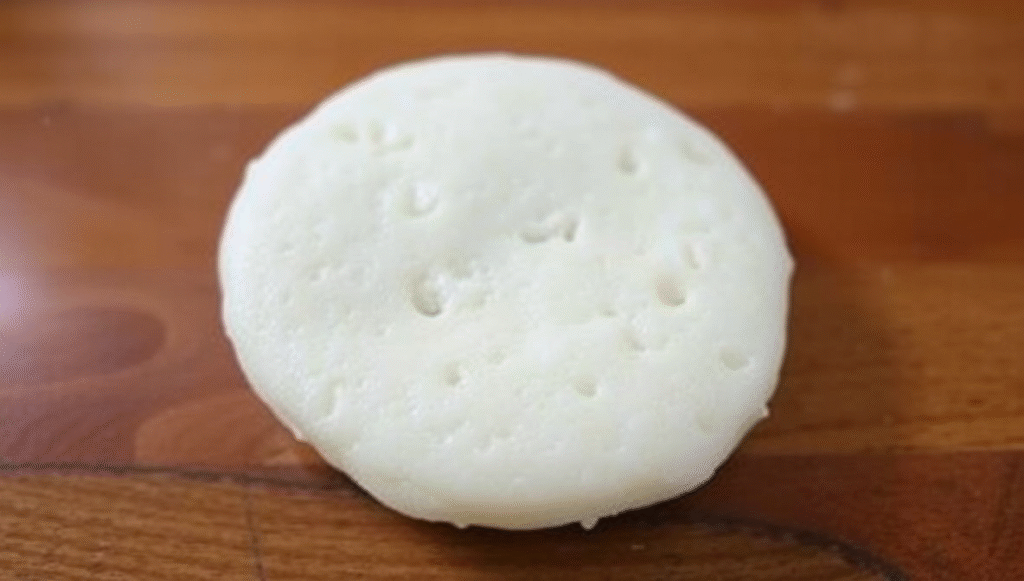
Bappam can be made in different ways depending on the taste and the family recipe. Some popular types of bappam include:
- Plain Bappam – Soft in the center and crispy on the sides. No sugar or extras.
- Sweet Bappam – A little sugar is added to the batter for a light sweet taste. Kids love this type.
- Coconut Milk Bappam – Served with thick, sweet coconut milk on the side. This is a favorite for breakfast.
- Egg Bappam – An egg is broken in the center of the bappam while it cooks. This version is more filling.
- Milk Bappam – This type is softer and usually made for babies or older people with easy-to-digest coconut milk.
These different types help keep the dish fun and tasty, so you never get bored of eating bappam.
Best Side Dishes to Eat with Bappam
Bappam goes well with many delicious side dishes. You can try it with:
- Vegetable Stew – A mild curry made with coconut milk and mixed vegetables.
- Egg Curry – Spicy or mild boiled egg curry tastes great with bappam.
- Chicken Curry – Rich and spicy chicken curry is perfect for a big breakfast or lunch.
- Kadala Curry – Black chickpeas cooked with spices. This is common in Kerala homes.
- Coconut Milk – A sweet and simple side that brings out the flavor of bappam.
You can also eat bappam with plain banana and sugar if you want something light and quick.
Health Benefits of Bappam
Bappam is not only tasty, but also healthy. Here are some health benefits:
- Easy to Digest – Because it is steamed and soft, bappam is gentle on the stomach.
- No Oil – Bappam is cooked without oil, so it’s good for people who want to avoid fried food.
- Low in Spices – It’s a mild food, perfect for kids and older people.
- Good for Energy – Rice and coconut give natural energy to start the day.
- No Artificial Colors or Flavors – All ingredients are natural and fresh.
This makes bappam a smart choice for people who want tasty food without giving up on health.
Why Bappam Is Loved in South India
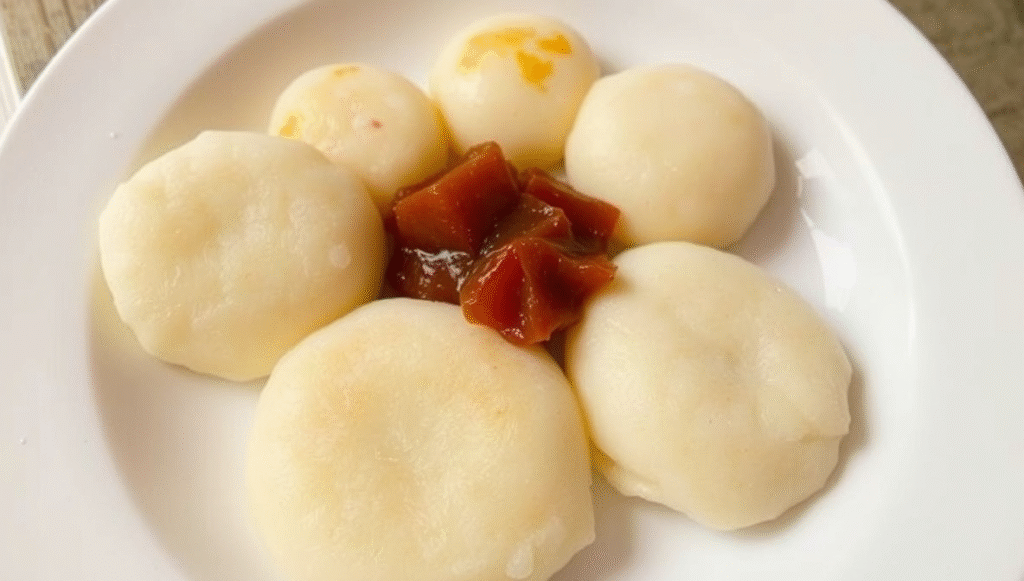
Bappam has a special place in South Indian culture. It is a dish that brings families together. In Kerala, many people eat bappam with stew on Sunday mornings or during festivals. The smell of bappam cooking is a happy memory for many children. It’s more than just food—it’s a part of family time, stories, and love.
Bappam is also used in traditional celebrations like Onam and Christmas. It shows how food can be both simple and special. Every home may have its own recipe, but the love for bappam is the same everywhere. People also enjoy sharing bappam with guests to show warmth and hospitality.
Tips for Making Perfect Bappam
Here are some easy tips to help you make perfect bappam every time:
- Use fresh grated coconut for better taste.
- Let the batter ferment well. This makes the bappam fluffy.
- Do not overheat the pan. A medium-low flame works best.
- Swirl the batter around the pan to get crispy sides.
- Keep the batter in the fridge if not using it all on the same day.
With these tips, you can enjoy soft and tasty bappam at home.
Common Mistakes to Avoid
Even though bappam is easy to make, some common mistakes can spoil it. Here’s what to avoid:
- Don’t make the batter too thick. Thin batter makes fluffy bappam.
- Don’t skip fermentation. Without it, bappam will be hard and flat.
- Don’t cook on high flame. It can burn the edges.
- Don’t use old rice or coconut. Always use fresh ingredients.
Avoiding these small mistakes will help you enjoy bappam that is soft and full of flavor.
Bappam for Kids and Elders
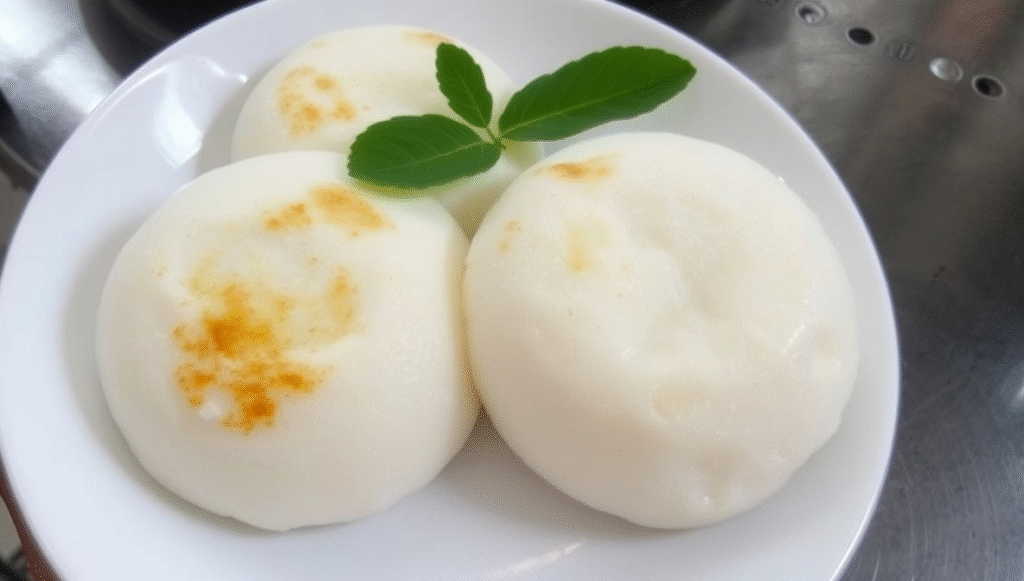
Bappam is great for people of all ages. Kids love the soft center and sweet taste if you add a little sugar. Elders like it because it is light and easy to chew. You can make it soft and less spicy depending on who is eating it. Adding banana or milk also helps make it more filling and gentle for the tummy.
For babies, you can mash bappam with milk. For elders, serve it with light stew or plain coconut milk. This dish is very flexible and can be changed based on health needs and taste.
Conclusion
Bappam is a soft, round, and tasty South Indian dish made with rice and coconut. It is light, healthy, and easy to cook. People love to eat it for breakfast or dinner with curry or coconut milk. You can make it sweet or spicy depending on what you like. Bappam is part of the South Indian tradition and is loved by kids, adults, and elders alike.
FAQs
What is bappam made of?
Bappam is made from soaked raw rice, grated coconut, cooked rice, and a little salt. The batter is fermented overnight to make it soft and fluffy.
Is bappam healthy?
Yes, bappam is steamed and made with natural ingredients. It has no oil or strong spices, so it is easy on the stomach.
Can I make bappam without coconut?
Coconut gives bappam its taste and softness, but you can try replacing it with cooked rice or coconut milk if needed.

